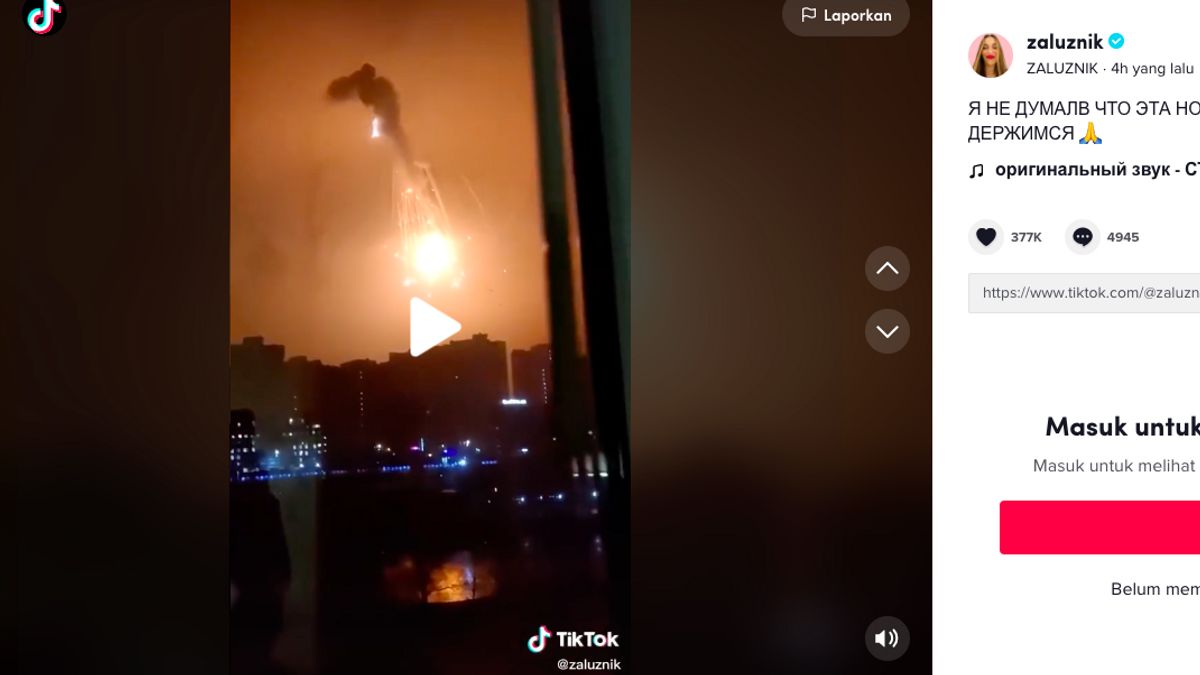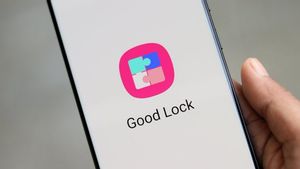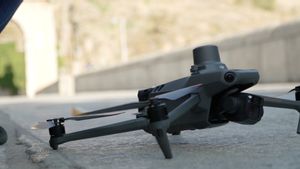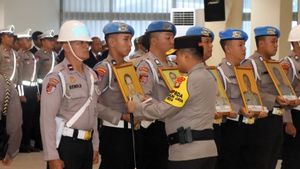JAKARTA - When Russia invaded Ukraine last week, some social media users had their first experience of witnessing the conflict from the front lines on TikTok.
Videos of people huddled and weeping in windowless bomb shelters or bunkers, bombs detonating in cities and missiles streaking across Ukrainian cities have sprung up on TikTok.
In fact, these videos have become the most popular content on short video applications, which so far usually offer fashion, fitness, and dance videos.
Ukrainian social media influencers posted grim scenes of themselves wrapped in blankets in an underground bunker. Meanwhile tanks and soldiers circled the residential streets. This video, juxtaposed with photos of flowers blooming and friends laughing at a restaurant honoring the more peaceful memories of their hometown. Very contrasting and heartbreaking.
@zaluznik, 🙏
♬ оригинальный -
These influencers urged their followers to pray for Ukraine, donated funds to support the Ukrainian military and demanded TikTok users, particularly from Russia, to join the anti-war effort.
Russia's invasion of Ukraine, which Vladimir Putin calls "special operations", is the latest example of the central role TikTok has played in bringing breaking news and events to the social media app's growing Gen Z audience.
TikTok's notoriously sophisticated algorithm, as it serves trending content even if users don't follow certain people, allows topics to quickly go viral among its 1 billion monthly users.
The app became so influential in this Russia-Ukraine conflict that the President of Ukraine, Volodymyr Zelenskiy, appealed to "TikTokers" as a group that could help end the war. Zelenskiy made the request in a speech addressed to Russian citizens.
A Ukrainian travel blogger named Alina Volik, who has more than 36,000 followers on TikTok, took a break from her habit of posting highlights of her travels to Egypt, Spain and Turkey. Instead he temporarily posted videos of life in invasion, a makeshift backpack stocked with first aid supplies and shuttered windows to protect himself from broken glass and bomb explosions.
In a TikTok video posted on Monday, February 28, Volik also urged followers of his account from various countries to watch his Instagram Stories to "see the truth" about Ukraine.
In an email to Reuters, Volik said he wanted to combat misinformation in Russia's reporting that the country's actions were a "military operation" rather than a war that cost Ukraine.
Montages of residential buildings being destroyed by missiles, empty grocery store shelves, and long lines of cars piling up outside gas stations can be seen on the TikTok pages of top Ukrainian influencers.
"@zaluznik" who has 2 million followers, posted one such montage on Sunday with the caption "Russia open your eyes!"
Russian influencers have also used the app to share their reactions. Niki Proshin, who has more than 763,000 TikTok followers, said in a video last Thursday that "normal people" in Russia do not support war.
"None of my friends and no one I spoke to personally supported today's event," he said, referring to the invasion of Ukraine.
On Monday, Russia's communications regulator Roskomnadzor demanded TikTok stop including military-related content in posts recommended for minors. Roskomnadzor also said that most of the content was anti-Russian. However, until now there has been no response from TikTok regarding Roskomnadzor's demands.
Online misinformation researchers also warn that false information about the current Russia-Ukraine conflict is mixed with the real thing. Even that information and content has spread widely on TikTok and other technology platforms including on Facebook, Twitter, and Youtube.
Even footage of the military simulator video game Arma 3, explosive images from the Israeli-Palestinian conflict in the Gaza Strip, old footage of heavy shooting and animation of airplanes have been shared on social media sites as if depicting Russia's invasion of Ukraine last week.
"We are continuing to closely monitor the situation, leveraging resources to respond to emerging trends and removing infringing content, including harmful misinformation and the promotion of violence," a TikTok spokesperson said. He also added that so far they have been working with fact-checking organizations.
Meanwhile some Ukrainian TikTok users have made it a mission to share information and spread awareness with Western audiences.
"I want people to understand, this is not a joke, this is a serious situation that Ukrainians face," Marta Vasyuta, 20, said in an interview on Monday.
One of Vasyuta's TikTok videos shows what appears to be a missile in the sky with the caption "Kyiv 4:23 am." The video had more than 131,000 comments on Monday, when users flooded the video to pray and express disbelief at the incident.
"Never expected to get a WAR update on TIKTOK," commented one user.
The English, Chinese, Japanese, Arabic, and French versions are automatically generated by the AI. So there may still be inaccuracies in translating, please always see Indonesian as our main language. (system supported by DigitalSiber.id)













